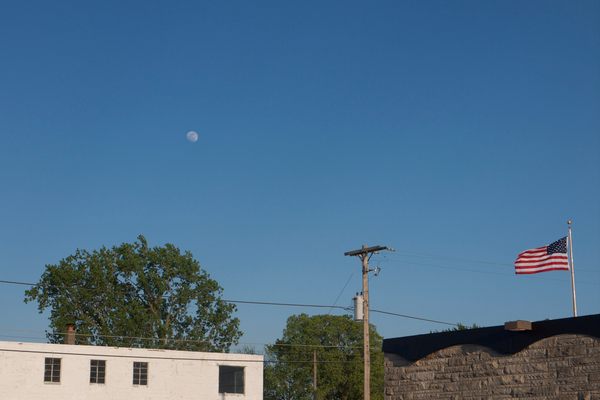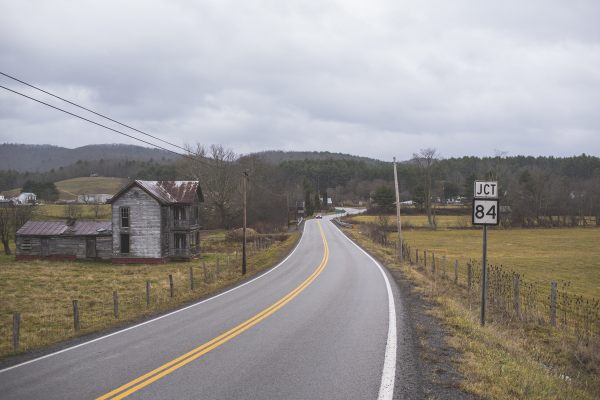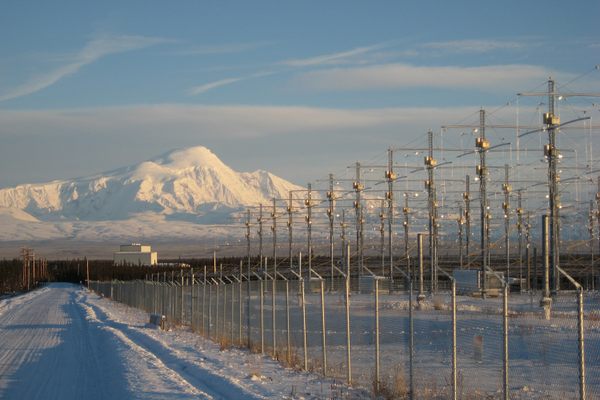Uncovering the Dark Secrets of Small Town Indiana
Behind the smiling faces and quiet streets, all is not how it seems in Hawkins, Indiana.

The fictional town of Hawkins, Indiana. (All photos: Courtesy Netflix)
Why is small town America so scary?
From Twin Peaks, to Sunnydale, to Stepford, Connecticut, the tiny, picture-perfect burg where evil lurks behind every picket fence is one of the most enduring staples in the horror genre. Now, with the upcoming Stranger Things, which begins streaming on July 15, Netflix is introducing a new, scary town into the atlas: Hawkins, Indiana.
Like so many spooky small towns before it, the true creepiness of Hawkins lies in how normal it looks. It’s a town of modest suburban houses, mom and pop diners, and pep rallies, just a far enough throw from civilization to be at once quintessentially American and a little behind the times. (Set in 1982, Hawkins is also meticulously faithful to historical details: the ruffled blouses, pastel hues, and boxy cars are a reminder of an often-overlooked moment when the ‘80s were more Melissa Manchester then Madonna.
At first glance, Hawkins is the kind of place where even the evil is pretty ordinary, and the town sheriff is on a first name basis with all the criminals. When children go missing in Hawkins, no one worries too much. Not at first.
But you barely need to scratch the perfect surface to find unspeakable things, and from the moment in the pilot that young Will Beyers disappears–riding his bike home after an eerily portentous session of Dungeons & Dragons–it becomes clear that nothing in Hawkins is as it seems. Even the surprises.

Winona Ryder as Joyce in Stranger Things.
As the show unfolds, Hawkins begins to reveal its secrets slowly. Every time you start to think you’ve got a handle on what’s going on, Stranger Things manages to pull the carpet out from under you: there are shady government agents, strange electrical disturbances, and mute telekinetic waifs hiding out in the basement. That’s on top of the more mundane monsters: deadbeat dads, Scroogelike bosses, and skeevy high school boyfriends. Most haunting of all is the shadowy, loping creature Will sees just before he crashes his bike and vanishes into thin air.
If some of this sounds familiar, that’s because it’s meant to. In addition to being a compelling supernatural mystery, Stranger Things is also a loving homage to, well, just about everything. It’s an ambitious love-child of Stephen King, Freaks and Geeks, The X-Files, and tabloid scandals of the ‘80s. But if watching it sometimes feels a bit like peering into a pop cultural kaleidoscope, it’s clear that the show is not just paying tribute to the science fiction and horror peaks of yesteryear, but also building something new and unexpected out of all those seemingly disparate scraps of effluvia.
Even Winona Ryder’s powerful and jittery performance as Joyce, Will’s grieving, chain-smoking mother, seems both a sly nod to history and a statement of purpose. In the ‘80s and ‘90s, Ryder became iconic for her portrayals of sensitive, offbeat, and precocious teenagers in weird situations. It’s hard, watching Stranger Things, not to think of Joyce as a grown-up version of all those those earlier characters, worn down by age and disappointment. Ryder still has that preternaturally haunted look, but now she has good reason to be haunted–both because of the unimaginable circumstances she now finds herself in, but also the many ordinary cruelties she’s been showered with.

A scene from Stranger Things.
It’s hard to guess, so far, where it’s all going, but after the hairpin turns of the show’s early episodes, it seems certain that Stranger Things still has tricks up its sleeve.
This is Hawkins, Indiana, after all. In a town where everyone knows each other’s name, the secrets are always that much darker.
These articles are brought to you by Netflix's Stranger Things. All Episodes Now Streaming.









Follow us on Twitter to get the latest on the world's hidden wonders.
Like us on Facebook to get the latest on the world's hidden wonders.
Follow us on Twitter Like us on Facebook